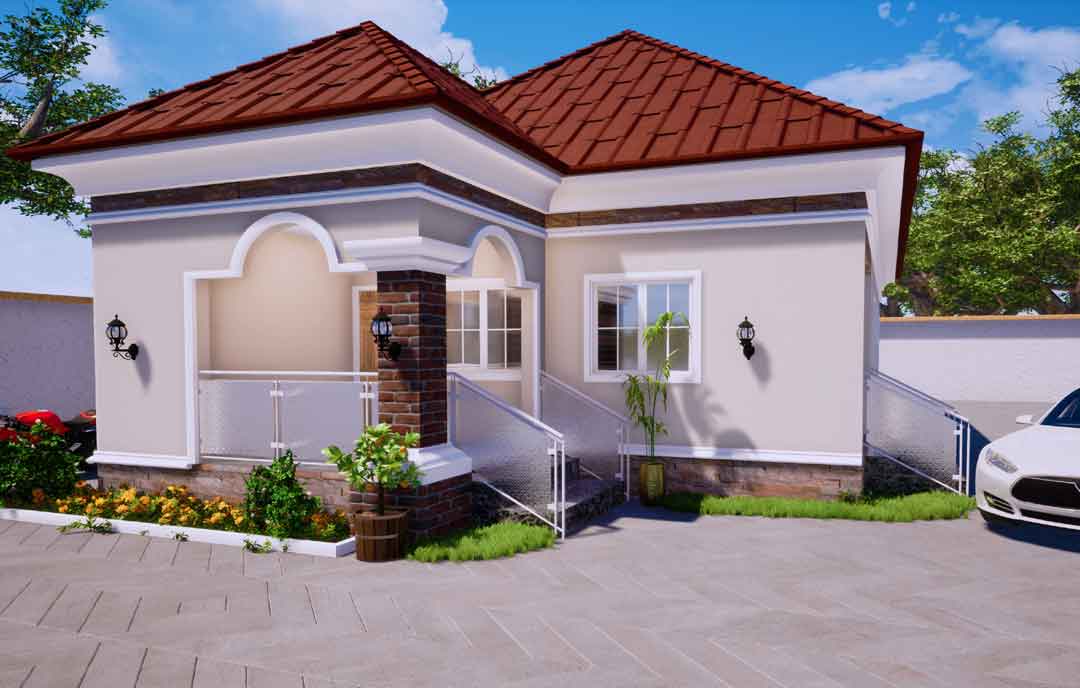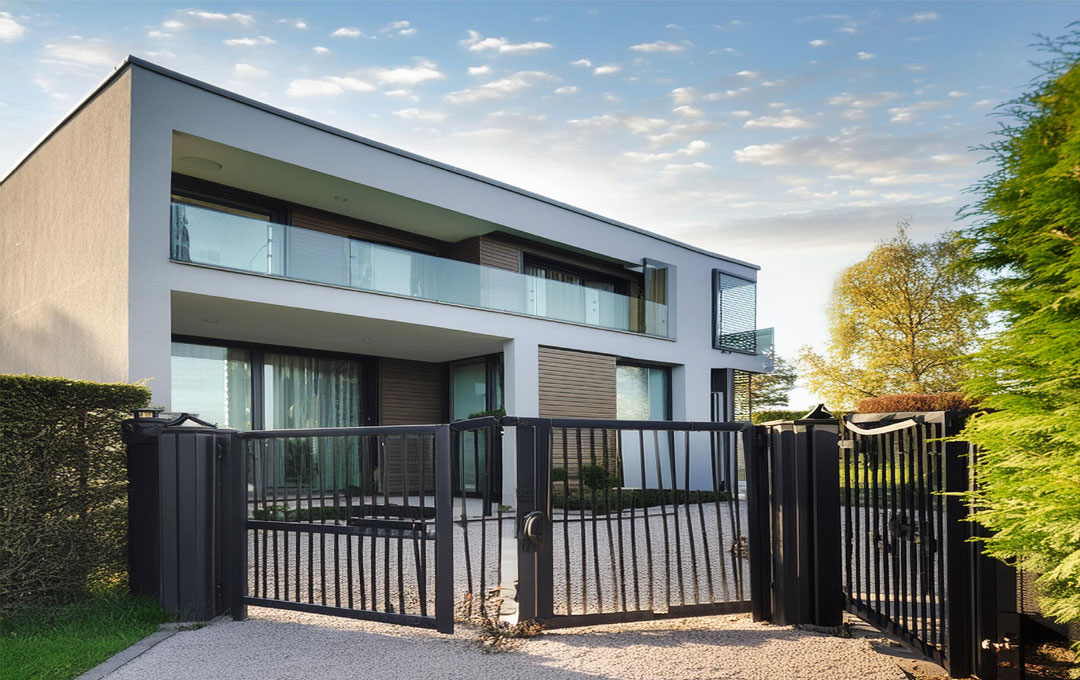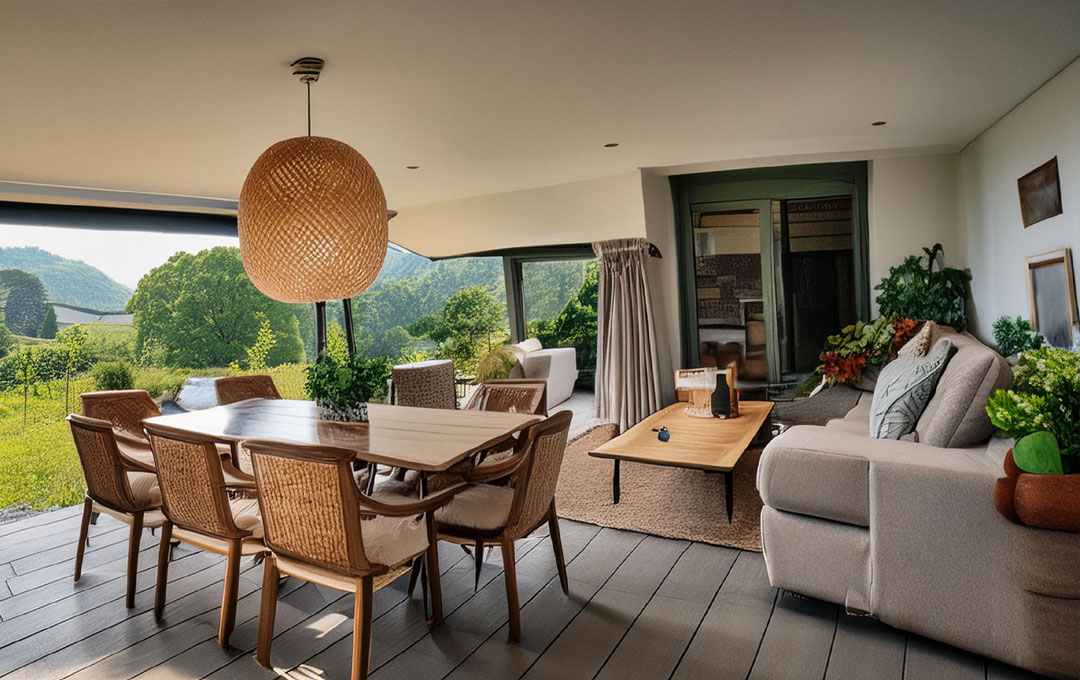Affordable 3 Bedroom Flat Plans on a Half Plot

Affordable 3 Bedroom Flat Plans on a Half Plot: Budget-Friendly Design and Cost-Saving Tips
Building a home is a monumental step that signifies stability, achievement, and a space to call your own. For many, the dream of owning a comfortable 3-bedroom flat can seem out of reach, especially when faced with space constraints and budget limitations. However, with thoughtful planning and smart design choices, creating an affordable, stylish, and functional 3-bedroom flat on a half plot of land is possible.
A half plot, typically measuring around 50 feet by 50 feet (approximately 2,500 square feet), offers a compact space that requires strategic use of every square foot. The challenge lies in balancing comfort, utility, and aesthetics within this limited area without incurring exorbitant costs. The good news is that through innovative design strategies and cost-saving measures during construction, you can achieve a harmonious blend of all three.
In this guide, we will explore a variety of budget-friendly design options tailored for a half plot. From open floor plans that maximize space and light to multi-functional areas that serve more than one purpose, these designs aim to make the most of every inch. We will also delve into practical cost-saving measures that can significantly reduce your construction expenses. By using locally sourced and recycled materials, simplifying roof designs, and embracing energy-efficient solutions, you can cut costs without compromising on quality or comfort.
Moreover, we will provide insights into efficient construction methods such as modular building, which can expedite the construction process and reduce labor costs. Whether you have some DIY skills or plan to hire local contractors, these tips will help you navigate the building process smoothly and economically.
By the end of this article, you will have a comprehensive understanding of how to approach building a 3-bedroom flat on a half plot with a keen eye on budget and design efficiency. This journey combines creativity, practicality, and resourcefulness, ensuring that your dream home is not only affordable but also a true reflection of your personal style and needs. Welcome to the world of smart, affordable home building!
Understanding a Half Plot
 When planning to build a 3-bedroom flat, understanding the dimensions and potential of a half plot of land is crucial. A half plot typically measures around 50 feet by 50 feet, which equals approximately 2,500 square feet. This compact area requires meticulous planning to ensure that the space is utilized efficiently and effectively.
When planning to build a 3-bedroom flat, understanding the dimensions and potential of a half plot of land is crucial. A half plot typically measures around 50 feet by 50 feet, which equals approximately 2,500 square feet. This compact area requires meticulous planning to ensure that the space is utilized efficiently and effectively.
The first step in understanding a half plot is recognizing its limitations and opportunities. The relatively small size means that every square foot counts, and wasteful designs can quickly eat up valuable space. However, this constraint also drives creativity, pushing you to think outside the box and come up with innovative solutions that make the most of the available area.
One of the primary considerations when working with a half plot is the layout. Traditional layouts with long hallways and segregated rooms can make the space feel cramped. Instead, open floor plans are an excellent choice for small plots. By eliminating unnecessary walls and combining the living room, dining area, and kitchen into one cohesive space, you can create a sense of openness and fluidity. This not only enhances the visual appeal but also maximizes the functionality of the space.
In addition to open floor plans, vertical space utilization is another critical aspect. With limited ground space, building upwards can be a practical solution. A single-story flat might feel more expansive, but a cleverly designed two-story structure can effectively double your living area without increasing the footprint. This approach allows you to allocate specific functions to each floor, such as living spaces downstairs and private bedrooms upstairs, ensuring privacy and efficiency.
The plot’s orientation is another important factor to consider. Proper positioning can optimize natural light and ventilation, reducing the need for artificial lighting and cooling. South-facing windows, for instance, can bring in ample sunlight throughout the day, making the space feel larger and more welcoming.
Furthermore, the exterior design and landscaping should not be overlooked. Even on a small plot, incorporating a small garden, patio, or balcony can provide essential outdoor space for relaxation and recreation. Thoughtful landscaping can also enhance the overall aesthetic appeal and increase the property’s value.
Understanding a half plot also involves being aware of local building regulations and zoning laws. These rules can affect various aspects of your design, including the maximum allowable height, setbacks from property boundaries, and the percentage of the plot that can be built upon. Familiarizing yourself with these regulations early in the planning process can prevent costly revisions and delays later on.
Smart Design Options
Designing a 3-bedroom flat on a half plot of land requires innovative thinking and strategic planning to ensure that the space is utilized effectively without compromising on comfort and functionality. Here are some smart design options that can help you make the most of a compact area while staying within budget.
Open Floor Plan
An open floor plan is a cornerstone of modern, space-efficient design. By eliminating unnecessary walls that separate the kitchen, dining area, and living room, you can create a more spacious and airy feel. This approach not only maximizes the use of available space but also enhances natural light and ventilation throughout the flat. The seamless flow between areas encourages social interaction and makes the home feel larger than it actually is. Moreover, fewer walls mean reduced construction costs and materials, which can be a significant saving.
Compact Layout
Opting for a compact layout is another smart design choice. This involves placing rooms close to each other to minimize wasted space. For example, situating the bedrooms around a central living area reduces the need for long corridors. A compact layout ensures that every square foot is used efficiently, creating a cozy and practical living environment. Additionally, this design can help lower heating and cooling costs by reducing the area that needs to be climate-controlled.
Multi-Functional Spaces
Designing multi-functional spaces is a practical way to enhance the utility of your home. Each room can serve more than one purpose, which is especially beneficial in a smaller footprint. For instance, a dining area can double as a workspace, or a guest room can also function as a home office. Using furniture that can be easily reconfigured or that serves multiple purposes, such as sofa beds or extendable tables, can further enhance the flexibility of these spaces. This approach reduces the need for extra rooms, keeping the design compact and cost-effective.
Modular Design
Modular design involves using pre-fabricated sections that are built off-site and then assembled on your plot. This method offers several advantages, including faster construction times and lower labor costs. Because the modules are built in a controlled environment, there is less waste and fewer delays due to weather or other on-site issues. Modular homes are also highly customizable, allowing you to choose layouts and finishes that suit your taste and budget. This efficiency can translate into significant cost savings while still delivering a high-quality home.
Efficient Use of Vertical Space
In a limited ground area, utilizing vertical space can dramatically increase the functional area of your home. Consider designs that include lofts, mezzanines, or split-level floors to add extra rooms or storage without expanding the footprint. High ceilings can also make rooms feel larger and more open. Adding built-in storage solutions, such as floor-to-ceiling shelves or under-stair storage, can help keep the home organized and free of clutter, maximizing the usable space.
Simple Roof Design
A simple roof design, such as a flat or gable roof, is both cost-effective and easy to construct. Complex roof structures can be more expensive and time-consuming to build. A straightforward roof not only reduces construction costs but also maintenance expenses over the long term. Flat roofs, in particular, can provide additional outdoor living space, such as a rooftop garden or patio, further enhancing the usability of your half plot.
Energy Efficiency
Incorporating energy-efficient features into your design can lead to long-term savings. Proper insulation, energy-efficient windows, and the use of sustainable building materials can reduce heating and cooling costs. Installing solar panels or using passive solar design principles, where the orientation and layout of the home maximize natural light and heat, can also significantly cut energy bills. Investing in energy-efficient appliances and lighting can further enhance the cost savings.
Cost-Saving Measures During Construction
 Constructing a 3-bedroom flat on a half plot necessitates careful planning and smart decisions to keep expenses manageable while ensuring quality and comfort. Here are some effective strategies to save costs during construction:
Constructing a 3-bedroom flat on a half plot necessitates careful planning and smart decisions to keep expenses manageable while ensuring quality and comfort. Here are some effective strategies to save costs during construction:
Material Choices
One of the primary ways to save costs is by selecting the right materials. opt for locally sourced materials to minimize transportation costs. Using local timber, bricks, and other materials can significantly reduce expenses compared to importing goods from distant locations. Local materials are also typically better suited to the region’s climate, ensuring durability and efficiency.
Recycled and reclaimed materials are another cost-effective option. Reclaimed wood, recycled metal, and eco-friendly bricks not only lower material costs but also support sustainable building practices. These materials often come with a unique aesthetic appeal and character, adding charm to your home without the high price tag.
Efficient Use of Space
Designing a single-level flat can be more cost-effective than a multi-story building. Single-story homes require fewer materials for structural elements like beams and stairs, simplifying the construction process and reducing labor and material costs.
Simple roof designs, such as flat or gable roofs, are less expensive to construct and maintain. They require fewer materials and less labor, significantly lowering overall construction costs. These designs also offer a modern, clean look and can be adapted to include features like rooftop gardens or terraces for added value.
Energy Efficiency
Incorporating energy-efficient features during construction can lead to substantial long-term savings. Proper insulation in walls, floors, and roofs helps maintain consistent indoor temperatures, reducing heating and cooling costs. Energy-efficient windows and doors further enhance this by minimizing heat loss in winter and heat gain in summer.
Installing solar panels is an upfront investment that pays off over time by cutting electricity bills. Solar energy can power various home systems, making your home more sustainable and less reliant on the grid. Additionally, using energy-efficient appliances and lighting can further reduce utility expenses.
DIY and Community Labor
If you have some construction skills, consider taking on certain tasks yourself to save on labor costs. DIY projects like painting, landscaping, and installing fixtures can be completed at a fraction of the cost of hiring professionals. Even if you’re not an expert, many tasks require only basic skills and a bit of time.
Utilizing community labor or hiring local contractors can also lead to significant savings. Local builders often offer more competitive rates than larger firms and are familiar with local building codes and conditions, which can streamline the construction process and reduce costs.
Modular and Prefabricated Construction
Modular and prefabricated construction methods are becoming increasingly popular for their cost-efficiency. In modular construction, sections of the home are built off-site in a controlled environment and then assembled on-site. This method reduces labor costs and construction time, resulting in substantial savings.
Prefabricated components like walls, roofs, and floors are manufactured to precise specifications, reducing material waste and ensuring consistent quality. This approach minimizes the risk of weather-related delays and damage, further lowering costs.
Strategic Project Management
Effective project management is crucial to preventing cost overruns. Detailed planning and scheduling, regular site inspections, and proactive problem-solving help keep the project on track and within budget. Close monitoring allows you to identify potential issues early and address them before they escalate.
Negotiating with suppliers and contractors can also result in better rates and terms. Building strong relationships with suppliers can lead to discounts, priority service, and favorable payment terms, contributing to overall cost savings.
Sample Floor Plan for Inspiration
 Designing a 3-bedroom flat on a half plot requires careful consideration of space, functionality, and aesthetics. Here’s a sample floor plan that maximizes the use of a 50×50 feet plot, ensuring comfort and efficiency while maintaining affordability.
Designing a 3-bedroom flat on a half plot requires careful consideration of space, functionality, and aesthetics. Here’s a sample floor plan that maximizes the use of a 50×50 feet plot, ensuring comfort and efficiency while maintaining affordability.
Open Living and Dining Area
As you enter the flat, you are welcomed by an open living and dining area. This combined space eliminates unnecessary walls, creating a sense of spaciousness and fluidity. The open-plan layout allows for easy interaction among family members and guests, making the home feel larger and more inviting. Large windows on two sides ensure ample natural light, reducing the need for artificial lighting during the day and creating a bright, airy ambiance.
Compact Kitchen
Adjacent to the dining area is a compact yet functional kitchen. Designed with efficiency in mind, the kitchen includes built-in cabinets, a small pantry, and modern appliances arranged in an efficient work triangle. This layout minimizes movement between the sink, stove, and refrigerator, making meal preparation quick and convenient. A breakfast bar or a small island can provide additional workspace and seating, further enhancing the kitchen’s functionality.
Master Bedroom with En-suite
The master bedroom is strategically located at one end of the flat to ensure privacy. It features a comfortable sleeping area, a built-in wardrobe, and an en-suite bathroom. The en-suite bathroom, though small, is equipped with essential fixtures including a shower, toilet, and sink. This setup provides a personal retreat within the home, offering convenience and seclusion for the occupants.
Two Additional Bedrooms
The other two bedrooms are positioned on the opposite side of the living area, sharing a common bathroom. These rooms can be used for children, guests, or as a home office. Each bedroom is designed to maximize space efficiency with built-in wardrobes and adequate windows to ensure good ventilation and natural light. The shared bathroom, situated between the two bedrooms, is easily accessible and equipped with a bathtub, toilet, and sink.
Multi-Functional Hallway
A central hallway connects the main living areas with the bedrooms and bathrooms. This hallway is designed to be multi-functional, serving as a storage area with built-in cabinets or shelves for books, linens, and other essentials. Utilizing this space effectively prevents clutter in other areas of the home and keeps everything organized and within reach.
Small Patio or Garden
Despite the limited plot size, it’s essential to incorporate some outdoor space. At the back of the flat, a small patio or garden can be created. This outdoor area can serve as a relaxation spot, a play area for children, or a place for gardening. Incorporating sliding glass doors between the living area and the patio can extend the indoor space and create a seamless flow between indoor and outdoor living.
Utility Room
Including a small utility room near the kitchen or at the back of the house can add significant value. This room can house the washing machine, dryer, and additional storage for cleaning supplies and household items. Keeping the utility room separate from the living and sleeping areas helps maintain a tidy and organized home.
Efficient Circulation and Flow
The floor plan ensures efficient circulation and flow, minimizing wasted space. By placing the bedrooms and bathrooms on one side and the living areas on the other, the design maintains a clear division between private and public spaces. This organization not only enhances privacy but also simplifies the layout, making it easier to navigate the home.
Final Thoughts
 Building an affordable 3-bedroom flat on a half plot of land is a rewarding yet challenging endeavor. The key to success lies in smart design choices and cost-saving measures that maximize the utility of the available space while keeping expenses under control. With careful planning and strategic execution, it is entirely possible to create a comfortable, stylish, and functional home within a modest budget.
Building an affordable 3-bedroom flat on a half plot of land is a rewarding yet challenging endeavor. The key to success lies in smart design choices and cost-saving measures that maximize the utility of the available space while keeping expenses under control. With careful planning and strategic execution, it is entirely possible to create a comfortable, stylish, and functional home within a modest budget.
One of the most significant advantages of working with a half plot is the opportunity to employ innovative design solutions that enhance both aesthetics and functionality. An open floor plan, for example, can transform a compact area into a spacious living environment by eliminating unnecessary walls and promoting a seamless flow between different living spaces. This design not only enhances the overall ambiance of the home but also reduces construction costs by minimizing the need for additional materials and labor.
Efficient use of space is another crucial aspect of building on a half plot. By incorporating multi-functional areas and modular designs, you can ensure that every square foot serves a purpose. This approach is not only practical but also cost-effective, as it reduces the need for excess construction and minimizes maintenance costs over time. Modular construction, in particular, offers a streamlined building process that can significantly cut down on labor expenses and material waste.
Energy efficiency is a long-term investment that pays off in reduced utility bills and enhanced sustainability. Proper insulation, energy-efficient windows, and the integration of renewable energy sources like solar panels can drastically reduce the operating costs of your home. These features not only make your home more comfortable but also contribute to environmental conservation, aligning with modern green building practices.
Material choices play a pivotal role in controlling construction costs. Opting for locally sourced and recycled materials can lead to substantial savings without compromising quality. These materials are often more affordable and better suited to the local climate, ensuring durability and reducing the need for frequent repairs or replacements. Additionally, using simple and practical design elements, such as a basic roof structure, can further trim down expenses while maintaining the home’s aesthetic appeal.
DIY and community labor are invaluable resources for budget-conscious builders. Tackling tasks such as painting, landscaping, and minor installations yourself can significantly reduce labor costs. Additionally, enlisting the help of local contractors or community members can provide more affordable labor options compared to larger construction firms. These efforts not only save money but also foster a sense of ownership and connection to your new home.
Finally, effective project management is essential to keeping your construction project on track and within budget. Detailed planning, regular site inspections, and proactive problem-solving can prevent costly delays and mistakes. By staying organized and maintaining clear communication with suppliers and contractors, you can ensure a smooth construction process and avoid unexpected expenses.





